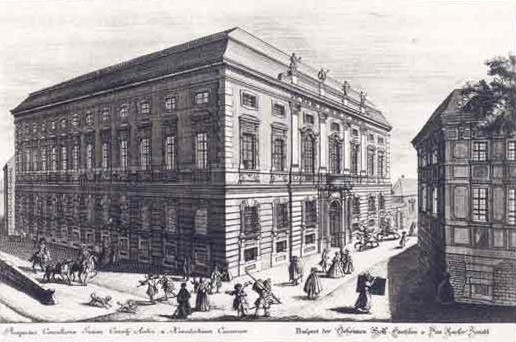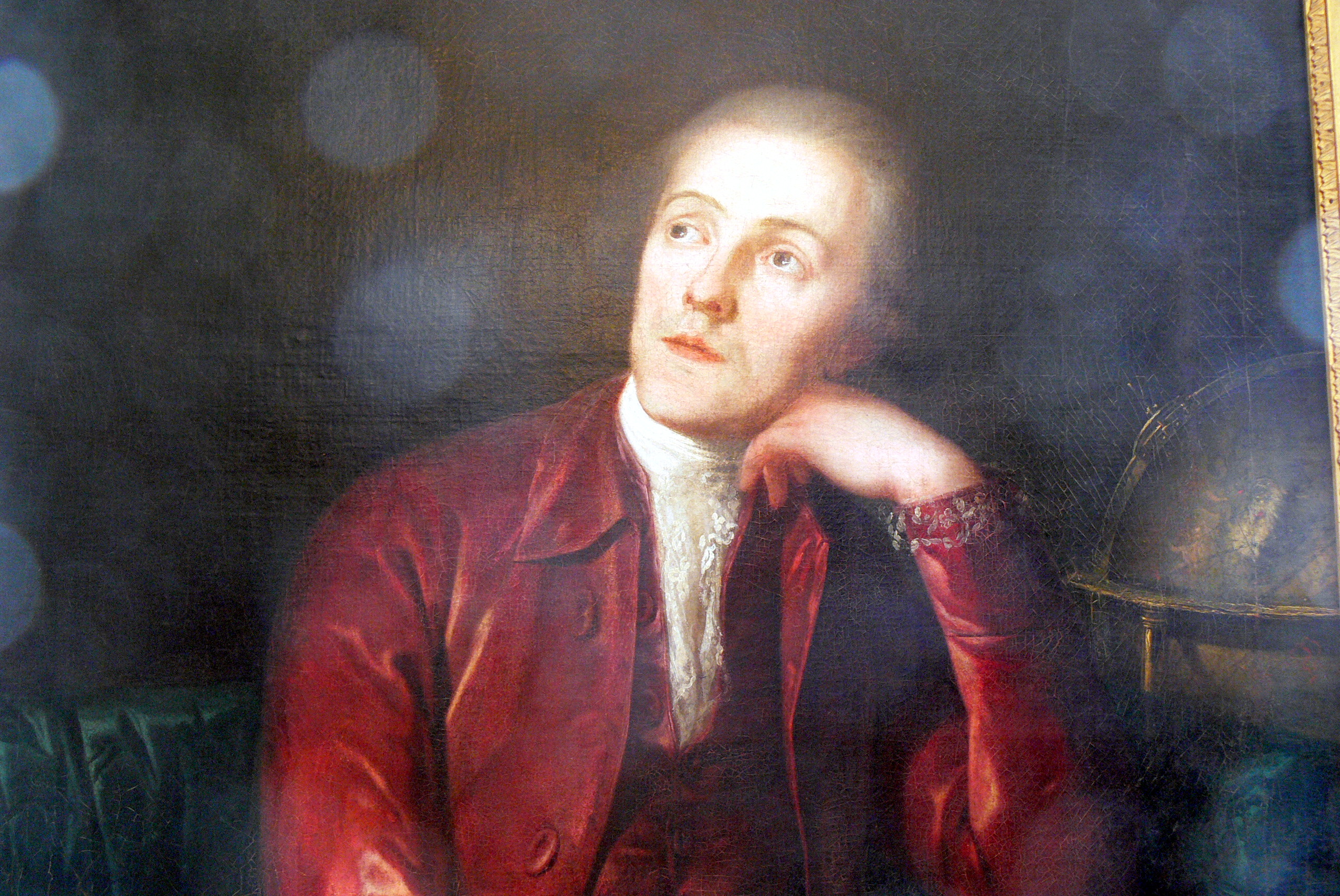|
Ballhausplatz
Ballhausplatz is a square in central Vienna containing the building (with the address Ballhausplatz 2) that for over two hundred years has been the official residence of the most senior Austrian Cabinet Minister, the State Chancellor, today the Chancellor of Austria (Prime Minister). As a result, ''Ballhausplatz'' is often used as shorthand for the Austrian Federal Chancellery. Until 1918 the Foreign Ministry of Austria-Hungary was also housed here. Similar to Downing Street or the Hotel Matignon, the word ''Ballhausplatz'' (or ''Ballplatz'' for short) is a synecdoche for the seat of power. Ballhausplatz is located in the first district Innere Stadt in central Vienna, a few minutes' walk from the Austrian Parliament Building and on the edge of the grounds of Hofburg Imperial Palace. Until 1754 the square itself did not exist, as an imperial hospital was located there. Ferdinand I, Holy Roman Emperor, erected a real tennis house there, the ''Ballhaus'' (ball house). Later th ... [...More Info...] [...Related Items...] OR: [Wikipedia] [Google] [Baidu] |
Foreign Ministry Of Austria-Hungary
The Imperial and Royal Foreign Ministry (german: k. u. k. Ministerium des Äußern) was the ministry responsible for the foreign relations of the Austro-Hungarian Empire from the formation of the Dual Monarchy in 1867 until it was dissolved in 1918. History The history of Austrian diplomatic service began in 1720 when Emperor Charles VI appointed his court chancellor, Count Philipp Ludwig Wenzel von Sinzendorf, Minister of the Privy Conference, responsible for the foreign affairs of the Habsburg monarchy. From 1753 to 1792 Austrian foreign policy was headed by State Chancellor Prince Wenzel Anton of Kaunitz-Rietberg. After the proclamation of the Austrian Empire in 1804, foreign affairs remained a prerogative of the Emperor and his appointed minister; epitomized by Prince Klemens von Metternich who held the office (1809-1848) throughout the Biedermeier period and made his ''Geheime Hofkanzlei'' on Ballhausplatz next to Hofburg Palace in Vienna a European centre of power. T ... [...More Info...] [...Related Items...] OR: [Wikipedia] [Google] [Baidu] |
Austrian Federal Chancellery
In Austrian politics, the Federal Chancellery (german: Bundeskanzleramt, lit=federal chancellery, abbreviated ; historically also and ) is the ministry led by the chancellor. Since the establishment of the First Austrian Republic in 1918, the Chancellery building has served as the venue for the sessions of the Austrian cabinet. It is located on the Ballhausplatz in the centre of Vienna, vis-à-vis the Hofburg Imperial Palace. Like Downing Street, Quai d'Orsay or – formerly – Wilhelmstrasse, the address has become a synecdoche for governmental power. Responsibilities The chancellery's primary function is to align the policies and public relations of the Federal Government. It represents the executive on federal level in matters of the Constitution of Austria and in international courts. It is also in charge of women's rights and gender equality, civil service, public administration and management, exercised by Ines Stilling in the rank of a Federal Minister and member of ... [...More Info...] [...Related Items...] OR: [Wikipedia] [Google] [Baidu] |
Chancellor Of Austria
The chancellor of the Republic of Austria () is the head of government of the Republic of Austria. The position corresponds to that of Prime Minister in several other parliamentary democracies. Current officeholder is Karl Nehammer of the Austrian People's Party (ÖVP), who was sworn in on 6 December 2021 following the resignations of Sebastian Kurz and Alexander Schallenberg, of the same party, as party leader and Chancellor. All three leaders formed a government with the Green Party, the first coalition between these two parties at the federal level. Brigitte Bierlein was the Second Republic's first , forming a nonpartisan caretaker government between a vote of no confidence in Kurz's first government in June 2019 and the formation of his second in January 2020. The chancellor's place in Austria's political system Austria's chancellor chairs and leads the cabinet, which is composed of the chancellor, the vice chancellor and the ministers. Together with the president, who ... [...More Info...] [...Related Items...] OR: [Wikipedia] [Google] [Baidu] |
Hofburg Imperial Palace
The Hofburg is the former principal imperial palace of the Habsburg dynasty. Located in the centre of Vienna, it was built in the 13th century and expanded several times afterwards. It also served as the imperial winter residence, as Schönbrunn Palace was the summer residence. Since 1946, it is the official residence and workplace of the president of Austria. Since 1279, the Hofburg area has been the documented seat of government.Aeiou-Hofburg-English , "Hofburg, Wien" (history), ''Encyclopedia of Austria'', Aeiou Project, 2006. The Hofburg has been expanded over the centuries to include various residences (with the ''Amalienburg'' and the ), the imperial chapel (''Hofkapelle'' or ''Burgkapell ... [...More Info...] [...Related Items...] OR: [Wikipedia] [Google] [Baidu] |
Austria
Austria, , bar, Östareich officially the Republic of Austria, is a country in the southern part of Central Europe, lying in the Eastern Alps. It is a federation of nine states, one of which is the capital, Vienna, the most populous city and state. A landlocked country, Austria is bordered by Germany to the northwest, the Czech Republic to the north, Slovakia to the northeast, Hungary to the east, Slovenia and Italy to the south, and Switzerland and Liechtenstein to the west. The country occupies an area of and has a population of 9 million. Austria emerged from the remnants of the Eastern and Hungarian March at the end of the first millennium. Originally a margraviate of Bavaria, it developed into a duchy of the Holy Roman Empire in 1156 and was later made an archduchy in 1453. In the 16th century, Vienna began serving as the empire's administrative capital and Austria thus became the heartland of the Habsburg monarchy. After the dissolution of the H ... [...More Info...] [...Related Items...] OR: [Wikipedia] [Google] [Baidu] |
Nicolò Pacassi
Nicolò Pacassi (5 March 1716 – 11 November 1790), also known as Nikolaus Pacassi, was an Italian-Austrian architect. He was born in Wiener Neustadt in Lower Austria in a family of merchants from Gorizia. In 1753, he was appointed court architect to Maria Theresa of Austria. He was commissioned many works throughout the Austrian Empire, mainly in Vienna, Prague, Innsbruck, Buda and his native Gorizia and Gradisca. He died in Vienna. Works * 1743 extension of Schloss Hetzendorf * 1745–47 extension of Schönbrunn Palace including Schlosstheater Schönbrunn * 1749–58 Buda Castle * 1753–54 extension of Spanish Hall of Prague Castle * 1753–75 Royal Palace of Prague Castle * 1761–63 Rebuilt the Theater am Kärntnertor, Vienna (''illustration'') * 1770 Reconstruction of Prague's cathedral St Vitus' tower * 1766 Extension of Ballhausplatz * Palazzo Attems Petzenstein in Gorizia * 1784 Josephinum - designed as the Academy for Military Surgeons, sponsored by Emperor Joseph I ... [...More Info...] [...Related Items...] OR: [Wikipedia] [Google] [Baidu] |
Wien - Bundeskanzleramt1
Vienna ( ; german: Wien ; bar, Wean, label=Bavarian language, Austro-Bavarian ) is the Capital city, capital, largest city, and one of States of Austria, nine states of Austria. Vienna is Austria's List of cities and towns in Austria, most populous city and its primate city, with about two million inhabitants (2.9 million within the metropolitan area, nearly one third of the country's population), and its Culture of Austria, cultural, Economy of Austria, economic, and Politics of Austria, political center. It is the Largest cities of the European Union by population within city limits, 6th-largest city proper by population in the European Union and the largest of all List of cities and towns on Danube river, cities on the Danube river. Until the beginning of the 20th century, Vienna was the largest German language, German-speaking city in the world, and before the splitting of the Austria-Hungary, Austro-Hungarian Empire in World War I, the city had two million inhabitants. To ... [...More Info...] [...Related Items...] OR: [Wikipedia] [Google] [Baidu] |


